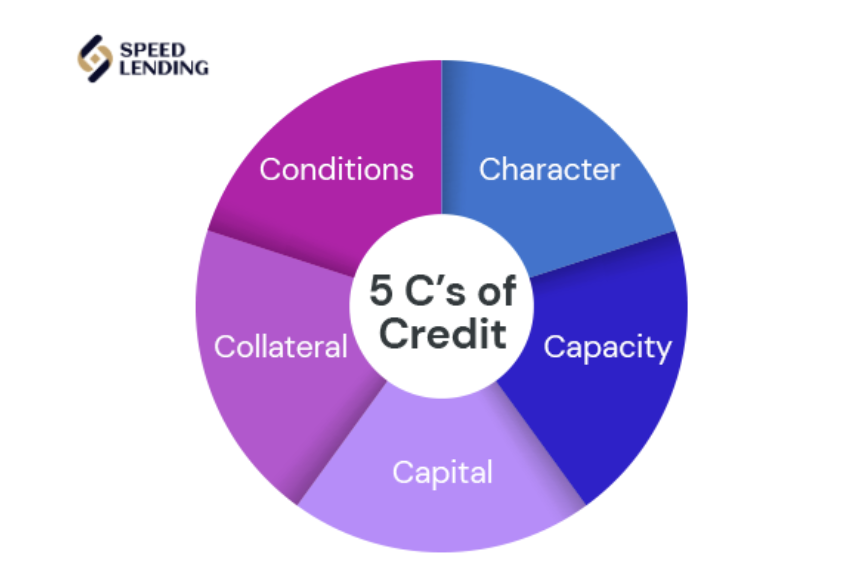Whether applying for a personal mortgage or a commercial loan, have you ever wondered what framework lenders use to make loan decisions? Certainly, this involves a substantial amount of mathematical calculations and economic modeling, but these are typically based on the framework known as the ‘5 Cs of Credit.’ Speed Lending will use this article to guide readers in understanding how lenders approve loans.
Lenders may examine a borrower’s credit reports, credit scores, income statements, and other pertinent documents reflecting the borrower’s financial condition. Additionally, they take into account details related to the loan itself. Each lender has its own approach to assessing a borrower’s creditworthiness, and most commonly, they employ the five Cs—character, capacity, capital, collateral, and conditions—when evaluating individual or business credit applications.

What Are the 5 CS of Credit?
1. Character
The first factor in assessing creditworthiness is Character, which revolves around the customer’s reputation and credit history. Credit teams typically utilize well-known credit bureaus like D&B, Experian, and Equifax to evaluate specific criteria, including: Payment history, Outstanding debts, Customer’s credit score, Past bankruptcies or foreclosures, Legal judgments against the customer
Character is a pivotal element as it enables organizations to gauge the risk associated with extending credit. For customers, possessing a favorable credit history and a high credit score signifies lower risk, making them more likely to be perceived as reliable in repaying debts promptly.
-
Capacity
‘Capacity’ refers to the financial capability of the customer’s organization to repay the supplier team. If the customer has faced inconsistent cash flows, the credit teams exercise caution before extending a line of credit.
In examining the stability of cash flow, is there an alternative entity besides a bank that can be considered? Credit teams include obligatory fields in their credit applications to gather details such as bank references and trade references. These references act as assurances for the availability of funds, providing the credit team with confidence that the customer can fulfill repayment obligations.
-
Collateral
Collateral refers to a valuable asset that a borrower offers as security to safeguard the lender’s interests in granting the loan. In the event of a borrower default, the lender has the authority to repossess or seize the collateral to recover the outstanding amount. The borrower’s capability and willingness to pledge substantial collateral serve to mitigate the risk for the lender.
For instance, in the case of a mortgage, the real estate itself acts as the collateral, while for an auto loan, the collateral is represented by the car.
-
Conditions
The terms of the loan, including the interest rate and principal amount, play a crucial role in determining the lender’s willingness to finance the borrower. Conditions also encompass how the borrower plans to utilize the funds. For instance, business loans with the potential to generate future cash flow might come with more favorable conditions compared to a loan for home renovation, especially in a sluggish housing market where the borrower has no intention of selling the property.
-
Capital
When applying for various loans such as a business loan, mortgage, or others, lenders seek evidence of the borrower’s commitment by ensuring they contribute their own funds. In the context of a business loan, lenders assess the investments made by the borrower in the business, encompassing inventory, equipment, and operational points. In the case of mortgages, auto loans, and significant purchases, lenders examine the size of the down payment the borrower is willing to commit towards the acquisition.
Why are the 5 Cs important?
Lenders utilize the five Cs to assess the eligibility of a loan applicant for credit and to establish associated interest rates and credit limits. These criteria aid in evaluating the risk associated with a borrower, gauging the likelihood that both the principal and interest of the loan will be repaid in a complete and timely manner.









